Crate
Choose the Best Wooden Crate in Malaysia
At first glance, it might seem like all wooden crates are created equal. In fact, it might be tempting to simply choose the cheapest option because wooden boxes made of wood can’t be all that complicated, right? But shipping your product in a poorly constructed shipping crate can have serious consequences. Here’s how to spot the subtle differences that could determine the success or failure of your shipment.
Dangers of Substandard Crates
Malfunction
A poorly constructed shipping crate can turn your entire shipment into a gamble. There is no guarantee that your crate, let alone the equipment inside, will arrive at its final destination in one piece. Lower quality building materials are less resilient and may not be able to stand up to the rigors of transport. For example, low-quality lumber is more likely to bow or warp when exposed to moisture. Thinner plywood is more susceptible to punctures from careless fork truck drivers or neighboring crates shifting during transit.
Injury
It’s not only your product that’s in danger from a substandard crate. Crates that are poorly constructed or built from lower quality materials, pose a risk for the people who will handle them during transit. Every shipment will come in contact with at least a handful of humans en route, including the person who first loads your product onto the truck at your loading dock, the handlers that transfer your package to a new truck at a shipping hub or into a shipping container in port, and the person who finally unloads the crate at your customer’s site. Careless construction can result in a worker receiving a nasty splinter or being snagged on a nail.
Bad Impression
You never get a second chance to make a first impression. The shipping crate will literally be the first thing your customer sees when your product arrives. Like a warm-up act at a comedy show, a high-quality crate helps get your audience in the right frame of mind for the “big reveal” when your product is unpacked. Alternately, a poor quality crate plants seeds of doubt before your customer ever even sees your product.
What to Look for in a Crate
So how do you tell a good shipping crate from a bad one? Inspecting a sample crate is really the only way to be certain of the quality of the materials and the workmanship. Here are the four most important characteristics to check:
- Lumber Grade
The Lumber Standard based on quality and appearance. The wide range of defects, such as the number and size of the knots, cracks between the age rings, and any twist in the boards, help determine the strength, utility, and value of the lumber being sold at each sawmill.

Here are the most common grades of lumber used to make crates and skids, in ascending order of quality:
- Industrial Grade: An inexpensive, low-quality lumber, prone to twisting and missing knots.
- Utility Grade: A more consistently flat and stronger grade of lumber with fewer and smaller knots.
- Construction Grade: A very sturdy, higher quality grade of lumber, most often used to frame out homes and other structures.
The standards provide a good starting point for judging the quality of packaging from a given manufacturer, but there can be small differences in quality within the same grade of lumber sold by different sawmills. (Utility grade lumber from one sawmill might actually contain boards that are technically much closer to industrial grade.) So it pays to do an in-person inspection of a sample crate before committing to an order.
As you inspect the crate, consider:
How flat are the boards? Beware of lumber that is bowed, warped, or twisted.
How solid is the lumber? Take note of any splits (which go all the way through the board) or check and shakes (cracks or separation of the grain between the tree’s annual growth rings.)
What type of knots are present? Loose or dead knots (sometimes surrounded by a dark ring) are more worrisome than tight knots that are well integrated with the grain of the wood.
Is there any evidence of rot? Be on the lookout, especially, for red rot which can introduce pin holes in the lumber, so that it acts like a sponge when it encounters water.
2. Plywood Thickness
Some crates and skids are constructed using 1/4” thick plywood, but that can give way under the power of sturdy kick-in work boots. Plywood that is 3/8” thick can take substantially more abuse. That extra eighth of an inch can have a surprisingly large impact because plywood is constructed from thin layers of wood that are glued together in alternating directions. Even a small increase in the thickness of the plywood can provide significantly more protection from warping, torque, and accidental stabs from fork trucks.
3. Fastener Strength
High-quality lumber and plywood won’t do all that much good if the packaging manufacturer skimps on the fasteners that hold your crate together. Ask about the type of nail or screw will be used to construct your crate. Here are some common fasteners used in crate construction:
- Ringshank or Twist Nail: With rings around the shank (the portion of the nail that penetrates the wood), these nails have greater staying power than standard smooth-shanked nails.
- Sheetrock Screw: A common choice for reusable crating, but it tends to be brittle, so the head can break off or get stripped.
- Deck Screw: A better choice for crating that will be disassembled for re-use. The weather-resistant coating helps protect it from the elements during shipment.
4. Construction Quality
Pay attention to the details of how the crate was assembled when examining the sample crate.

What is the overall impression of the crate? Make sure it is clean and dry and the corners are squared up. Remember, this is the first impression your customer will have of your product as it is delivered. Just like you wouldn’t give someone a birthday gift wrapped in a dirty kitchen towel, don’t forfeit making a good first impression by ignoring the general appearance of the sample crate.
Can the crate be handled safely? Check to see that there aren’t any nails or screws that are poking out from the surface of the crate, waiting to snag the skin or clothing of an unsuspecting handler. A professional packaging operation should use a nail bed to “clinch” the nails in your crate. (Clinching is a process in which the nail is driven through the material being assembled and into a steel surface. Once the nail hits the steel, it bends into the wood or “clinches.”) Clinching prevents injury and also significantly increases the holding power of the nail.
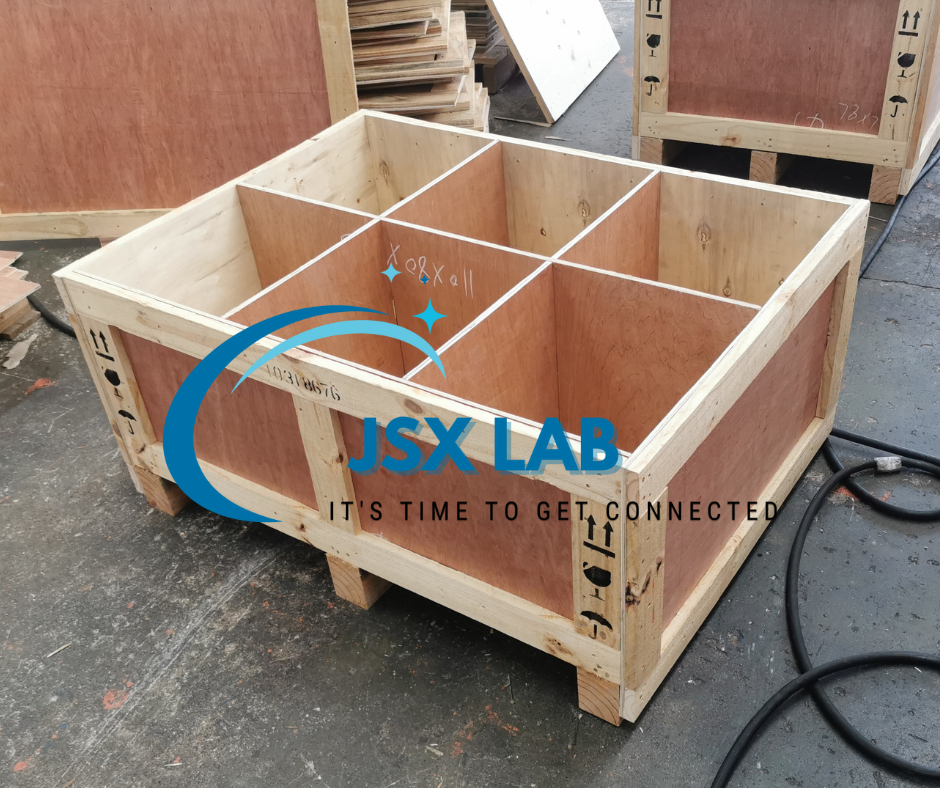

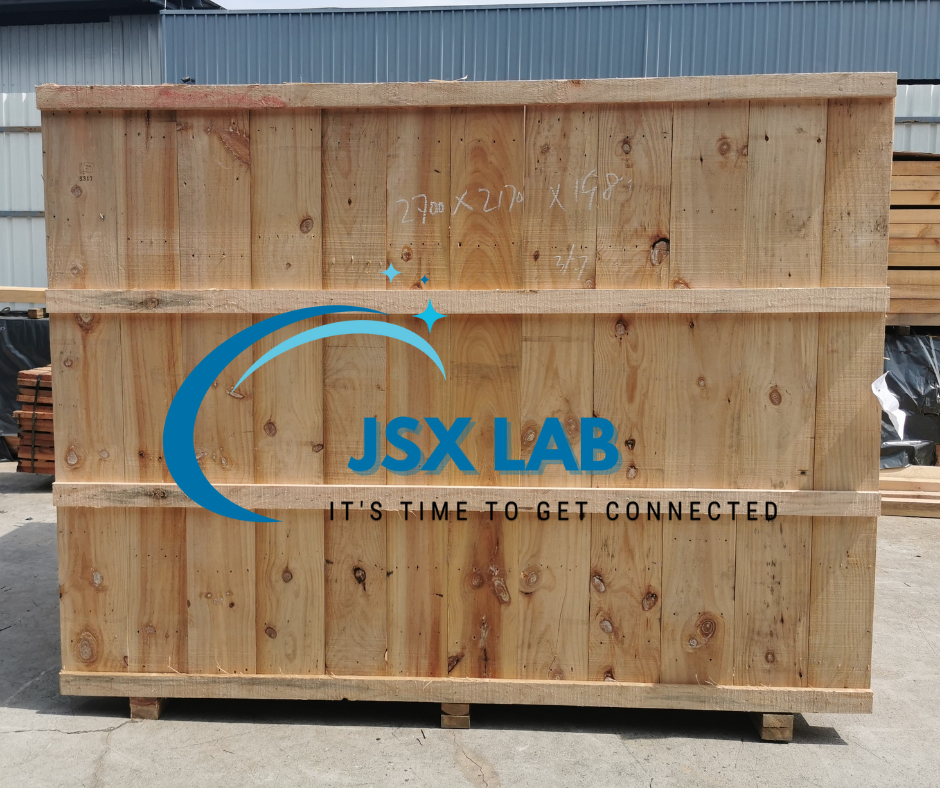
JSX Lab No.1 Wooden Box supplier in Malaysia Johor and Singapore.
Knowing how to choose the best quality wooden shipping crates will help ensure that your product arrives at your customer’s site in premium condition. Crates constructed by JSX Lab surpass industry standards for both raw materials and construction techniques.
We offer the best quality wooden crate, wooden box, plywood cases and shipping boxes online at the best price to our Malaysia Johor Bahru and Singapore customers. We also provide onsite packing services. Simply visit our Shop section to access our secure checkout. To speak with our team, you can call us at +6012 727 0188. Because we understand that each customer has a different budget, we work closely to find the best solution.
To learn more about our prices, request a quote today. Simply fill out the contact form to send us your details and specifications. We will get back to you as soon as possible with a custom price.
All JSX Lab wooden box, wooden crate, plywood cases and shipping boxes have been Heat Treated with ISPM 15 certified. You can browse our entire range of box sizes and types to find the right one for you. Secure delivery is available for all orders. We deliver to Singapore and Malaysia. If you need bulk orders or have questions, please feel free to contact our team.
Make a good first impression!
Follow our Instagram


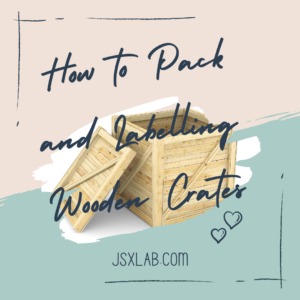
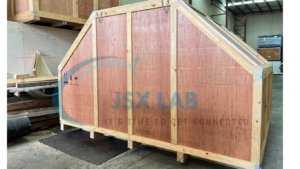

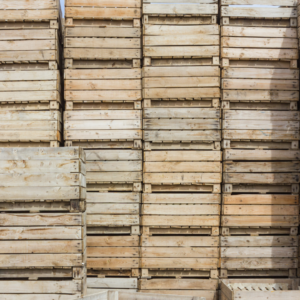
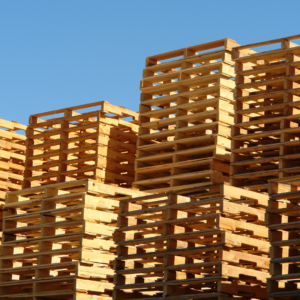
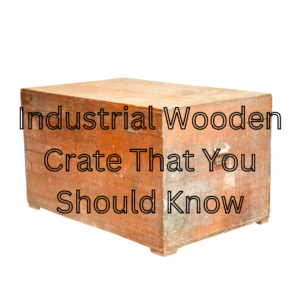
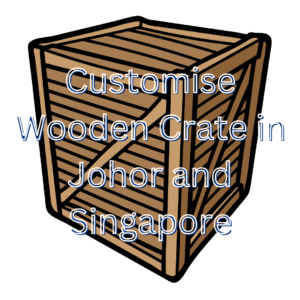
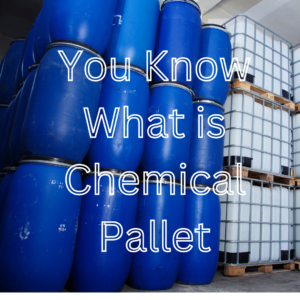
Pingback: Customise Wooden Crate in Johor and Singapore - JSX Lab